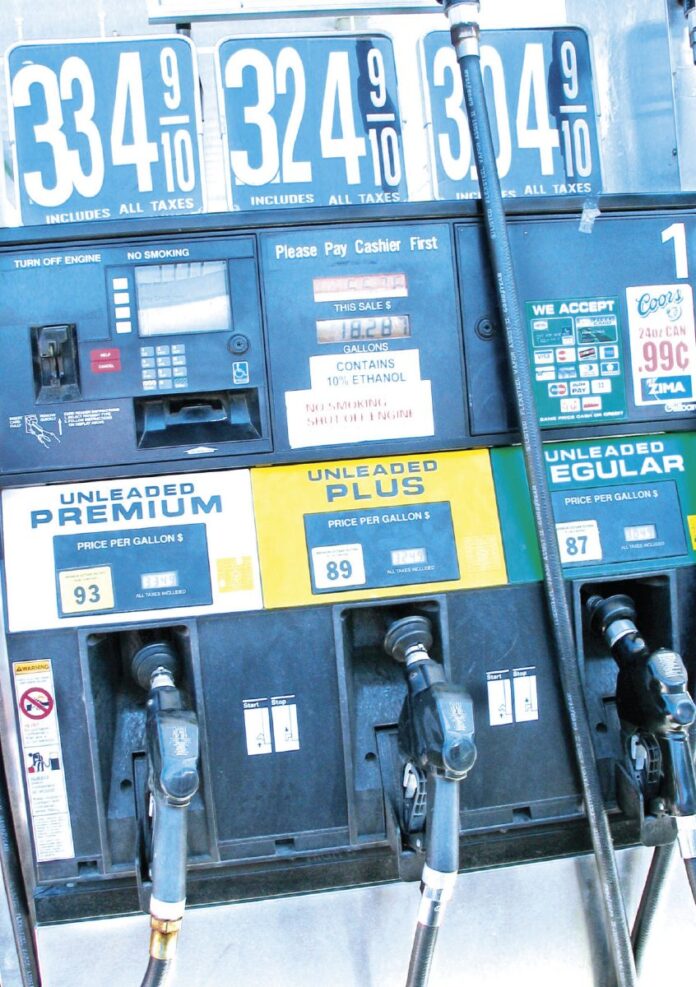BROWNSVILLE — When it comes to oil prices, what comes down must go up.
In mid- to late-June, crude oil prices reversed their long decline and began inching upward from a little more than $44 per barrel.
The trend gained steam in mid-December. As of yesterday afternoon, the price of a barrel of crude on the New York Mercantile Exchange had risen to $65.98.
The change has been reflected at the gas pump in recent days. The average price for a gallon of regular gasoline yesterday in the Rio Grande Valley was around $2.48.
In mid-December it was about $2.05. In September 2016 it hit $1.83.
The winter spike in gas prices is unusual, since they usually go down in winter and rise in summer.
Patrick DeHaan, head of petroleum analysis for GasBuddy, said crude oil is going up largely due to OPEC’s decision to cut supplies, and despite U.S. production of 10 million barrels per day — the highest level since 1970 and close to an all-time record.
In 2014, OPEC started producing as much oil as it could in an attempt to “kill the shale revolution” made possible by hydraulic fracturing, or “fracking,” which has made possible an increase in U.S. production from 6 million to 10 million barrels per day over one decade, he said.
OPEC’s move didn’t kill off U.S. producers, though it did dampen production. It also created a glut that drove oil prices — and gasoline prices — way down, DeHaan said. Realizing that its strategy had failed, OPEC in late 2016 decided to cut oil production to the tune of 1.8 million barrels per day starting in 2017, he said.
Normally when OPEC cuts production, it’s not totally effective because some member-nations cheat, DeHaan said. This time it’s different, with all 14 member-nations obeying the restriction, he said.
“In this case, compliance has been 100 percent,” DeHaan said. “In the last year that’s meant that over 650 million barrels of crude oil that otherwise would have been produced hasn’t been.”
U.S. inventories have fallen 77 million barrels during the past year despite near record production, which still isn’t enough to offset OPEC cuts, he said. U.S. oil exports, which were legalized during Obama’s last year in office, are now at record levels and further draining U.S. supplies, DeHaan said.
Despite producing 10 million barrels per day, the United States still has to import 10 million barrels a day to feed its habit, he said.
Meanwhile, China’s oil import level is approaching that of the United States, DeHaan said. Yet another factor is OPEC member-nation Venezuela, in the midst of a political and economic crisis, and exporting oil at its lowest level since 1989, he said.
Expect gasoline to keep going up, with prices hitting $3 a gallon in some places by the peak spring season, DeHaan said.
“In addition, once refinery maintenance season begins en masse by mid-March, gasoline production ability will be diminished, sending prices higher,” he said. “To make things worse yet, the transition to summer gasoline will constrain supply further and eventually send prices up at a faster pace than what we’re currently seeing.”
Highest Prices
Hawaii – $3.353
California – $3.315
Alaska – $2.987
Washington – $2.981
Pennsylvania – $2.874
Lowest Prices
Texas – $2.353
South Carolina – $2.359
Mississippi – $2.363
Alabama – $2.368
Arizona – $2.376
Average as of yesterday
Source: GasBuddy




